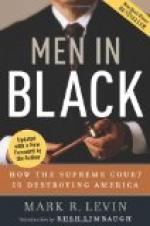“I tried to stop the car,” says the motorman.
Up jumps the other lawyer. “I move to strike out as a conclusion.”
The witnesses have testified to slightly different facts than what were stated in the pleadings. “I move to amend the pleadings to conform to the proof,” says the lawyer.
“I move for an adjournment on the ground of surprise,” says the other.
Of course the statement of the conductor is a conclusion of fact. But if the other side wants to find out how he tried to stop the car, let him ask what was done. “Did he turn on the brake handle? Did he switch on the emergency?” A man does not have to be an expert to say that the car was going fast; he may be examined as to what he considers to be fast. Nor does he have to be an expert to say that eggs are rotten, that butter is rancid, that there has been a war in Europe, that a man has a broken leg or looks sick or acts queerly, that the fish is stale or the cow was red.
The motion to strike out does not affect the jury, the testimony still remains on the jurors’ minds. The verbal memory stays. Neither does the motion to amend the pleadings affect the jury. What have they got to do with it? If the papers are amended it is not important from their standpoint. Should the plaintiff have written a letter that he was going to sue for something, to the jury that seems better than any pleading.
These motions are insignificant and examples of a formalism which, however valuable it may be as defining the methods of the legal battle, are not consistent with the modern spirit of investigation into facts. It is rather significant that the laws creating Public Service Commissions and Legislative Investigation Committees in some States go to the length of stating that there shall not be any rules of evidence such as are employed in the courts of law.
The other motions, such as to direct a verdict, which is usually the same as a motion to dismiss, and the motions after a verdict has been rendered, are also formal statements of a request for the disposition of the case.
They may be all very good and useful in their way, but are merely the incidents and measures by which the truth of the matter is reached. The client looks puzzled at the argument and the decision, the jurors have a not very clear conception of what is going on, the lawyers have a meretricious feeling that perhaps they are cheapening themselves a little by making so many motions, yet they, nevertheless, have a legal right to do so and they must take advantage of every legal right for the protection of their clients.
After all the witnesses have been called, the plaintiff and the defendant have proved their sides, the plaintiff has contradicted the new evidence of the defendant, everybody has been examined, the interruptions of the objections and motions, exceptions have been had, the judge asks if both sides are through and the presentation of the case is ended.




